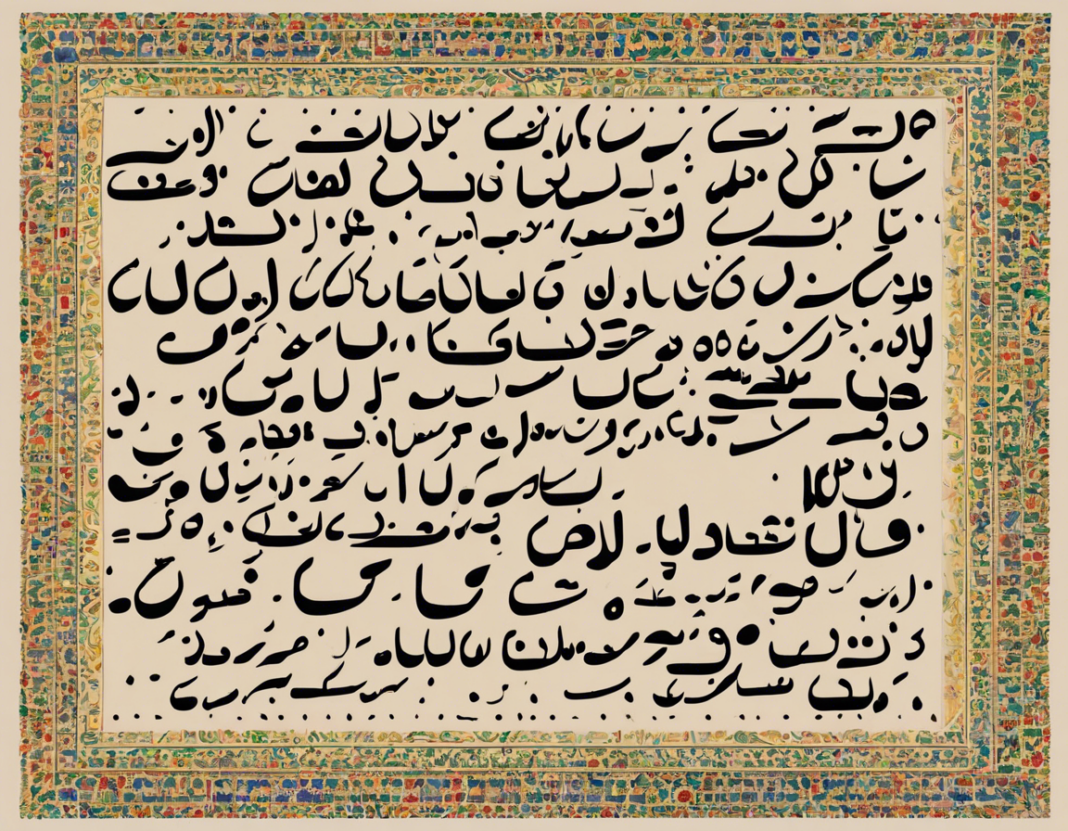Introduction
Arabic and Malayalam are two languages that belong to different language families – Arabic is a Semitic language spoken predominantly in the Arab world, while Malayalam is a Dravidian language spoken in the Indian state of Kerala and Lakshadweep islands. Despite their linguistic differences, there is a significant demand for translating Arabic to Malayalam due to various reasons such as trade, cultural exchange, and migration.
Understanding Arabic and Malayalam
Before delving into the translation nuances, it is crucial to understand the unique characteristics of both languages. Arabic is written from right to left and has a complex system of root words, prefixes, and suffixes. On the other hand, Malayalam is written from left to right and has a distinctive script called ‘Malayalam Script,’ which is derived from ancient Brahmi script.
Challenges in Translation
Translating from Arabic to Malayalam poses several challenges due to differences in grammar, syntax, and sentence structure. Arabic is a highly inflected language with three grammatical cases, while Malayalam follows a subject-object-verb (SOV) word order. Additionally, Arabic has a rich vocabulary with influence from various languages, including Persian and Turkish, making it challenging to find direct equivalents in Malayalam.
Strategies for Translation
-
Transliteration: One common strategy is to transliterate Arabic words into Malayalam script. Transliteration helps in maintaining the pronunciation and nuances of the original Arabic words.
-
Contextual Translation: Understanding the context of the text is crucial for accurate translation. Translators must comprehend the cultural and contextual nuances of both languages to convey the intended meaning effectively.
-
Use of Translation Tools: Leveraging technology, such as online translation tools and software, can aid in translating Arabic to Malayalam. However, it is essential to review and edit the translated text for accuracy and context.
-
Cultural Sensitivity: Successful translation goes beyond linguistic accuracy; it also requires a deep understanding of the cultural nuances embedded in the text. Translators must be sensitive to cultural differences and adapt the translation accordingly.
Key Differences in Arabic and Malayalam
-
Grammar: Arabic is a highly inflected language with a complex system of verb conjugations and noun declensions. In contrast, Malayalam follows a more analytic grammar structure with fewer inflections.
-
Vocabulary: Arabic has a rich vocabulary with influence from various languages due to its historical significance. Malayalam, on the other hand, has borrowed words from languages like Sanskrit and Tamil.
-
Pronunciation: Arabic is known for its guttural sounds and unique phonetics, which can be challenging for Malayalam speakers to pronounce accurately.
Tips for Accurate Translation
-
Maintain Clarity: Ensure that the translated text is clear, concise, and maintains the original meaning of the Arabic text.
-
Check for Cultural References: Pay attention to cultural references, idioms, and proverbs that may not have direct equivalents in Malayalam.
-
Proofread Thoroughly: After translation, it is crucial to proofread the text for grammatical errors, typos, and consistency in terminology.
Commonly Used Phrases in Arabic and Their Malayalam Translations
- Hello – Marhaba – ഹലോ (Halo)
- Thank you – Shukran – നന്ദി (Nandi)
- Good morning – Sabah alkhyr – സുപ്രഭാതം (Suprabhatham)
- How are you? – Kaifa haluka? – സുഖമാണോ? (Sukhamaano?)
- I love you – Ana ohibbuka – ഞാൻ നിന്നെ സ്നേഹിക്കുന്നു (Njan ninne snehikkunnu)
Frequently Asked Questions (FAQs)
1. Is it necessary to hire a professional translator for Arabic to Malayalam translation?
– While professional translators ensure accuracy and quality, you can use online tools for basic translation. For important documents, it is recommended to seek professional assistance.
2. Are there any resources available for learning Arabic and Malayalam simultaneously for translation purposes?
– Yes, several language learning platforms offer courses in both Arabic and Malayalam that can help in bilingual proficiency and translation skills.
3. How can I ensure confidentiality and security in Arabic to Malayalam translation services?
– When hiring translation services, ensure that the translators sign non-disclosure agreements and follow secure data handling protocols to maintain confidentiality.
4. What industries typically require Arabic to Malayalam translation services?
– Industries such as e-commerce, healthcare, legal, tourism, and education often require Arabic to Malayalam translation services for communication with diverse audiences.
5. Are there specific dialects of Arabic that are commonly translated into Malayalam?
– While Modern Standard Arabic is predominantly used for formal translations, certain regional dialects like Gulf Arabic or Levantine Arabic may require specific expertise for accurate translation into Malayalam.
In conclusion, translating Arabic to Malayalam requires a deep understanding of linguistic nuances, cultural contexts, and effective communication skills. By employing appropriate strategies, maintaining accuracy, and being attentive to cultural sensitivities, translators can bridge the linguistic gap between these two distinct languages successfully.

